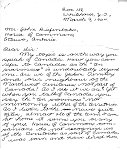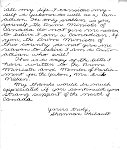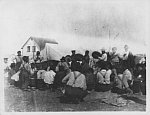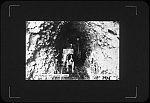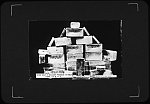Government Policy and the Canadian North
Author: Curt McManus Page 1 | Page 2 | Page 3
In March of 1964, an angry Shannon Thibault wrote a two page letter of censure to then Prime Minister of Canada, Lester B. Pearson. It seems that Pearson, in repeated radio interviews had repeatedly forgot to mention the Canadian North when discussing his vision for Canada. According to Thibault, Pearson persisted in referring to Canada as ten provinces and for Thibault, a resident of the still burgeoning community of Whitehorse, Yukon this was an inexcusable lapse. She sent a copy of her letter to former Prime Minister John G. Diefenbaker who had been voted out of office only one year before, but not for his neglect of the Yukon. In fact, Diefenbaker is almost alone amongst the Prime Ministers as one who championed the development of the Yukon and North West Territories. But, after his eviction from office in 1963, the north instantly reverted to its status as a region of singular unimportance and Thibault was very quick to pick up on this transition.
Thibault’s feelings were neither exceptional nor out of the ordinary. For decades, the Canadian government had treated the north, at best, as a region which could periodically yield temporary resource revenue and, at worst, a region over which federal authorities grudgingly asserted sovereignty and authority and this only to ward off any possible interest in the area by other nations. Indeed, in October 1958, Montreal Engineering’s chief planner, D.M. Stephens said at a conference on northern development that “sovereignty over this vast northern hinterland carries with it pretty immense responsibilities, responsibilities which we as Canadians have been pretty slow to acknowledge.”
So Thibault was correct in her sense that the North did not quite fit into the Canadian fabric. With a sparse population, a forbidding landscape and climate extremes, the north seemed destined to be irrelevant to those who did not call it home. And for the most part, government policy regarding the north was underpinned by that very assumption: such a place, the thinking seemed to go, simply does not warrant the attention of any formal policy. And so from earliest times, until the advent of the Diefenbaker administration, the Canadian North remained outside the perceptions of successive federal administrations who only ever reluctantly submitted themselves to their responsibilities in the Canadian North.
Given the relative neglect of the North, it is not surprising that the matter of sovereignty and not policy was the starting point for federal government’s early and tentative interventions in the North. Just prior to the Last Great Gold Rush in the Yukon, for example, there was a considerable compliment of miners in that region of Canada, many of whom were American. Mining camps are not places of purity at the best of times and Anglican and Catholic missionaries informed the Canadian government that Law and Order needed to be brought to the Klondike. Alcohol and gambling, it seemed, were doing their part in rotting the moral fiber of both natives and miners and the missionaries urged intervention. But as historian Ken Coates noted, it was not until the federal authorities learned about “unregulated trade” that they put their foot down.
In a scenario proportionately redolent of the Mounties famed Long March into the drylands of south-east Alberta to bust up the whiskey trade at Fort Whoop-up in 1875, a compliment of two Mounties arrived in the Yukon in 1895. Inspector Charles Constantine and Staff Sergeant Charles Brown arrived, established Fort Cudahy and became the first tangible evidence that the arctic did in fact belong to Canada.
The Mounties arrived just prior to the famous on-rush of thousands of Americans and Canadians who descended upon the Yukon in 1898, the start of the Gold Rush. The Mounties, in historian Morris Zaslow’s words, “were the first symbol of Canadian authority” which the Stampeders saw as they crossed the mountain passes into the Klondike region. With the Mounties visible and present on this territory, no opening was left for the United States to intervene on the behalf of persecuted citizens and claim state-hood. Thus the first tangible presence of Canadian authority in the North amounted to nothing more than a dozen or so Mounties, though that small number of NWMP officers adequately expressed the level of commitment that federal authorities had for the North.
